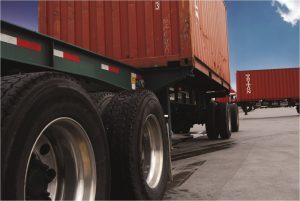
Chassis shortage was the topic of conversation at a panel of the Coalition of New England Companies for Trade (CONECT) conference earlier in May. Better communication between shippers, drayage providers, and terminal operators is key to improving the current congested conditions for container movement at interior US cities, agreed panelists including representatives of BNSF Railway, chassis provider DCLI, and the California-based Harbor Trucking Association. The ongoing surge of imports across top US ports has upset the balance of land use at ports and terminals — with inbound loads taking more space than ever, outbound loads such as exports and empty containers are losing ground. But if terminal operators are informed of which containers are unlikely to be picked up quickly, they can ground the containers and repurpose the chassis to other priority cargo. “If we knew that the BCO [beneficial cargo owner] couldn’t accept that unit for whatever reason, or they didn’t have an appointment until seven days later, we’d never want to put the container on one of [DCLI’s] chassis,” Brandon Unterbrink, vice president of international intermodal marketing for BNSF Railway, said. “We’d want to put [the chassis under] a container that’s going out the gate quickly to serve the BCO. We would put the other load in an auxiliary lot immediately, take it off the chassis to free the equipment to utilize more efficiently.” To relieve the land use balance, BNSF has opened auxiliary lots in Dallas, Chicago, and Memphis, but the root dwell issues remain.